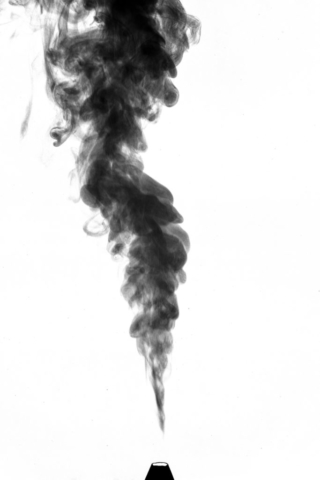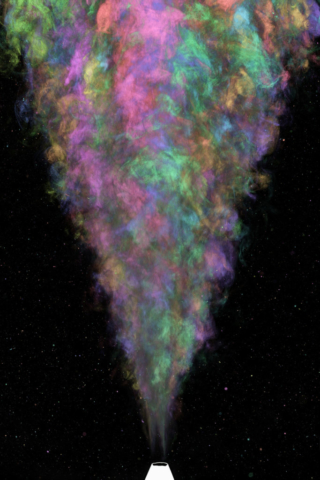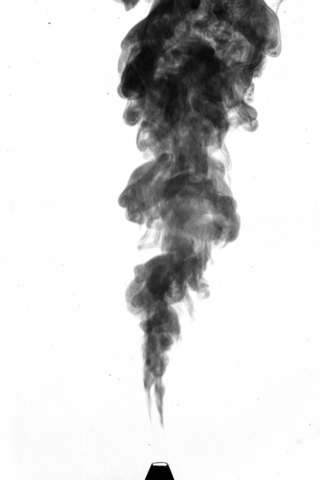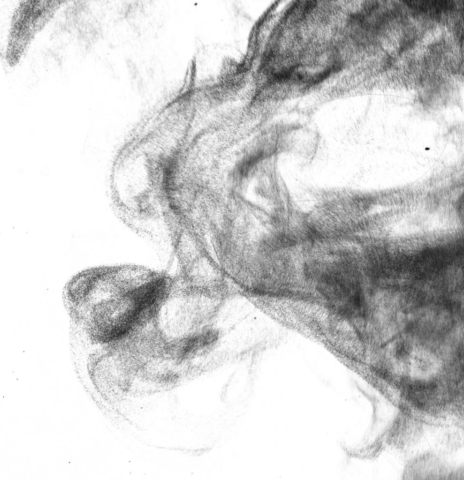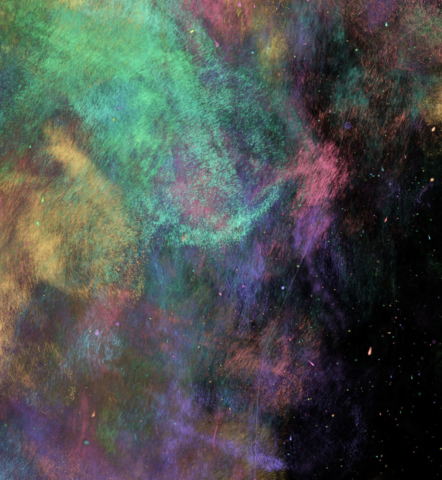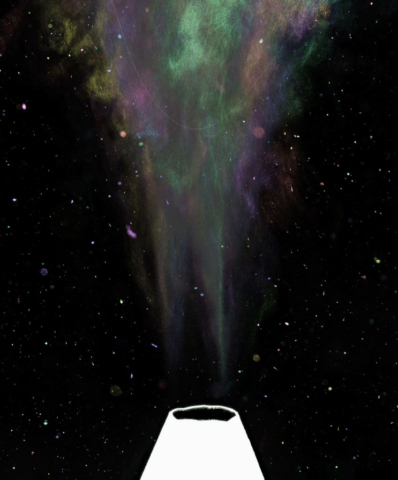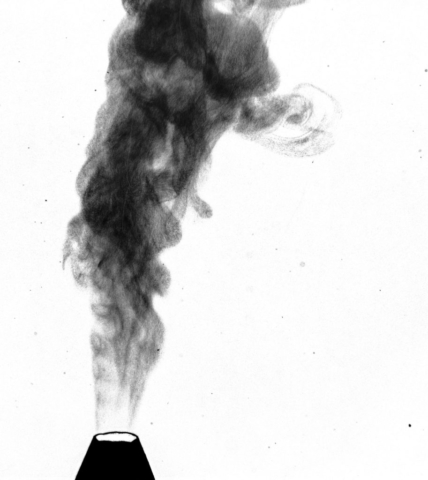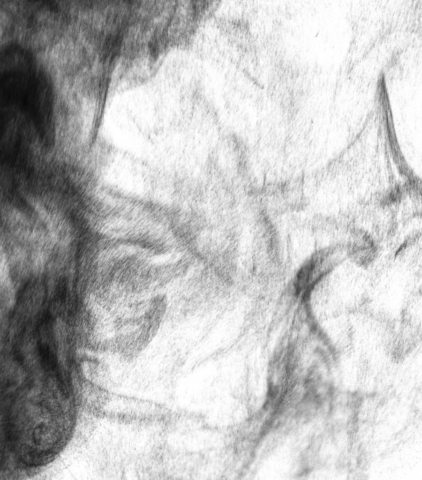Space of States, Boundary Condition
Space of States, Boundary Condition
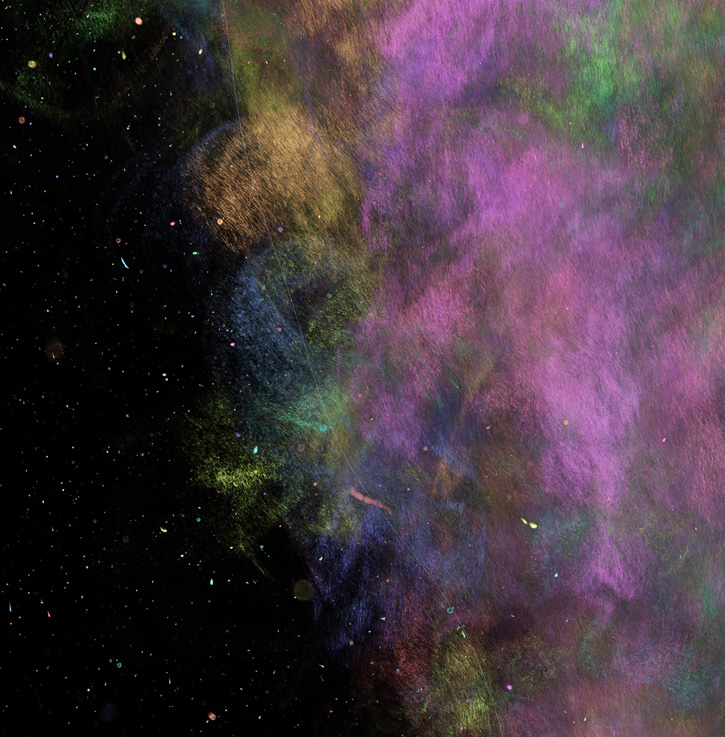
Time symmetric laws unfolding from a condition of low entropy define an arrow of time.
Six monochrome images show rising mist winding through turbulent air, expanding as the mist cools and rises from the nozzle. Though the mist appears diffuse from a distance, looking closely reveals the clouds are made up of distinct points that trace out short lines showing the direction of motion during the 4.5 millisecond duration of the strobe that illuminated them.
When 200 of these unique, apparently chaotic images are composited in the central image, the clouds trace out a very regular cone showing the simple statistical law that emerges from the complex interaction of particles. The movements and interactions of each particle are perfectly time-reversible symmetric, but the emergence of the statistical law is the emergence of time itself. A system in a low entropy state—the boundary condition, which is the cloud of mist emerging from the narrow aperture of the nozzle at the bottom of each image—will unfold through tiny, reversible interactions, irreversibly into a higher entropy state. These clouds don’t re-condense, they only expand, and the expansion, while unpredictable on the small scale, is predictable on the large scale. The even, regular expansion which forms the cone shows that time-symmetric laws at the small scale can lead to irreversible emergent states on the large scale, and thus is created our perception of an arrow of time. The Big Bang is the boundary condition that gives our universe an arrow of time. But why did we have a boundary condition to begin with?

Seven 20″×30″ prints. The central print is a composite of 200 images of mist, each exposure a different hue. The six images flanking it are examples of the single exposures which make up the middle image. On each image, faint lines trace out the morphological center of each form and a boundary encompassing the majority of particles.
Details:
